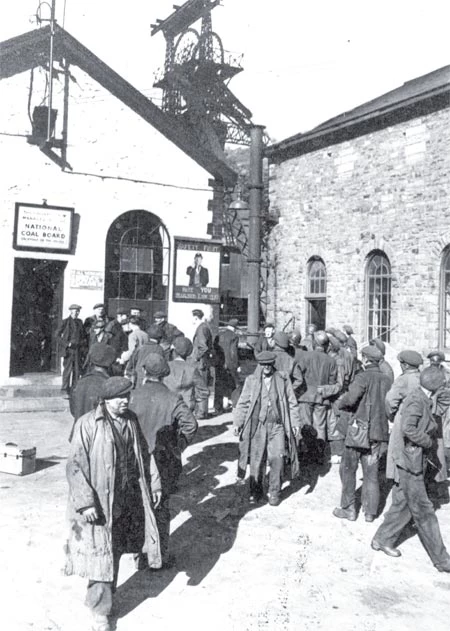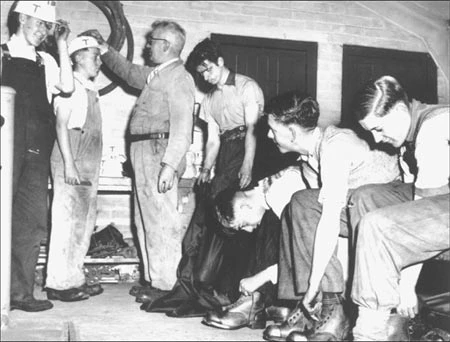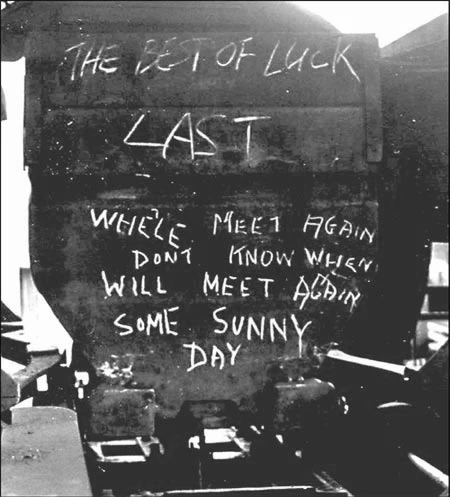The National Coal Board in South Wales
Post War Britain
The dismal history of the coal industry between the world wars, government control during the Second World War and the need for coal in post-war Britain made nationalisation of the British coal industry almost inevitable after the election of a Labour government in 1945.
'Vesting Day', 1 January 1947, was largely welcomed in Welsh collieries when the south Wales coalfield became part of the South-Western Division of the National Coal Board (NCB). Assets taken over by the NCB in the UK included over 1,400 coal mines, 225,000 acres of farm land, 140,000 miners' houses, shops, offices, hotels, swimming baths, a holiday camp and a cycle track!
Investment and Disappointment
Nationalisation brought in considerable new investment for south Wales. Between 1948 and 1953, nearly £32 million was invested in the Cardiff region alone, with the reconstruction of Nantgarw Colliery cost £4.5 million. There was increased mechanisation at the coal face and drives to improve health and safety. However, by the mid-1950s, the NCB began to be seen as remote as any of the previous private coal owners. Investment had also often failed to bring results, with the expensive Nantgarw Colliery producing a disappointing 100,000 tons of coal a year.
Closures and disasters
Even from the early days of the NCB there was a tendency to close smaller, uneconomic pits and reorganise the larger ones. However, during the 1960s a deliberate rundown of the south Wales coalfield had begun. No other British coalfield suffered such closures - in 1960 there were 106,000 south Wales miners, by 1970 there were 60,000. The pace of closures only slackened off during the Middle East oil crisis of the mid-1970s.
1960, an explosion at Six Bells Colliery killed 45 miners, and on the morning of Friday, 21 October 1966, a large section of the spoil heap of Merthyr Vale Colliery slid down the hillside onto the village of Aberfan, killing 144 people including 116 children.
The 1960's
The 1960s saw the development of new 'super pits' at Abernant, Brynlliw and Cynheidre Collieries as well as the reorganisation of existing collieries such as Coegnant, Deep Navigation and Merthyr Vale.
The decade also saw all British mineworkers brought onto the same pay rate. Both management and trade unions broadly welcomed this agreement, although many men saw a substantial fall in their incomes.
The Agreement forged a greater sense of unity between UK coalfields, which paved the way for the national strikes of 1972 and 1974, which were fought over wages, the latter dispute bringing about the fall of the Conservative government.
The final years
By the early 1980s the British mining industry had become one of the safest and most efficient in Europe. However, a new Conservative government was in place and a new round of pit closures announced. The Welsh coalfields were especially vulnerable due to the age of the collieries and the difficult geology.
Although closures had been reluctantly accepted in the past, the lack of alternative employment led to calls for industrial action. The last great miners' strike began in March 1984 and lasted a year. The defeat of the miners paved the way for the final destruction of the Welsh coal industry.
The next ten years saw the end of coal as a nationalised industry. In 1994, Tower Colliery, the last remaining deep coal mine in Wales was closed by the NBC, (renamed British Coal). However, convinced that the mine was still economical, 239 miners bought the colliery with their own redundancy money and the mine remained operational until it's final closure on 25th January 2008, bringing to an end 200 years of deep coal mining in south Wales.
This article forms part of a booklet in the series 'Glo'produced by Big Pit: National Mining Museum. Download here



Comments - (6)
The photograph is definitely Lewis Merthyr Colliery and shows men around the old lamp room following Nationalisation in 1947. The building to the right is the 'Bertie' (downcast shaft) winding house.
A new lamp room was later installed between the two shafts, and the one shown in the photograph was demolished sometime in the 60s/70s (?).
The headgear and winding house shown in the photograph have now been preserved as part of the Rhondda Heritage Park, Trehafod.
Best wishes
Ceri Thompson, Curator, Big Pit: National Coal Museum
I have passed this onto our Curator for our records to be updated.
Thank you for taking the time to let us know the correct information.
Graham Davies
Digital Team.
Actually, It shows miners returning to the surface the end of the morning shift at the Fernhill Colliery, #4 shaft, Blaenrhondda, taken sometime in the 1960's.
The NCB employee in the right centre of the picture, his raincoat open and facing directly at the camera, is my late father. He was a lifetime resident of Treorchy, Rhondda and an underground coalmine worker for over 50 years.
Alun Jones, resident of Vancouver Island. Canada.
Dear Mike H
As there were around 3,000 coal mines in Wales working at various times during the last 200 years it would be a mammoth task to produce a potted history. However, if you are interested in more modern mines, I would suggest 'Collieries of South Wales, volumes 1 and 2' by John Cornwell who was a photographer working with the NCB during the late 1970s/early 1908s. These two volumes contain some excellent photographs and are well worth obtaining.
“GAZEETTER OF THE COAL MINES OF SOUTH WALES & MONMOUTHSHIRE” by Tony Cooke is also worth obtaining as it contains a huge amount of information on individual collieries from the early days of the industry to the present century.
The development of the Welsh coalfields is charted in the 'History of British Coal', which is in 6 Volumes by various authors.
If you would like further information please contact me at Big Pit on 02920 573660.
Best wishes
Ceri Thompson, Curator (Welsh Coalmining Collections)